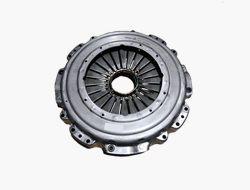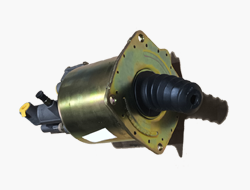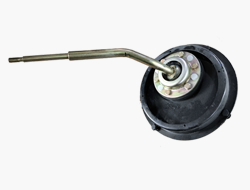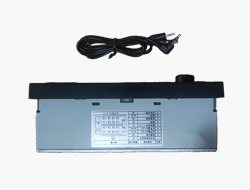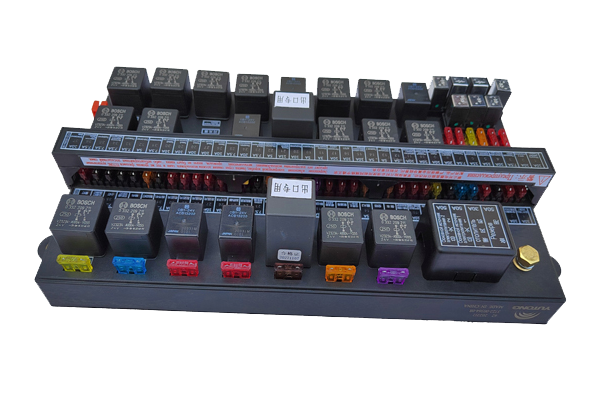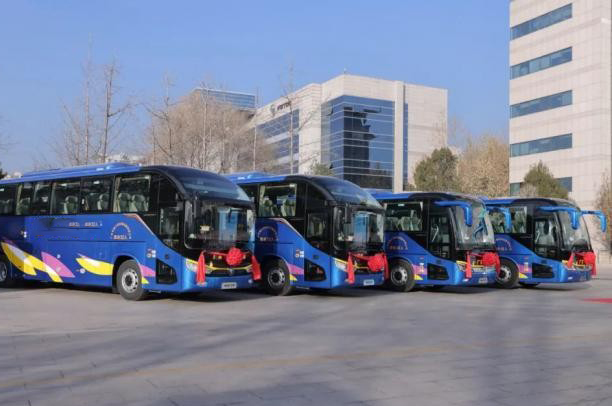A Deep Dive into Truck Engines
Powering The Road: A Deep Dive Into Truck Engines
.jpg)
.jpg)
Truck engines are the workhorses of the transportation industry, providing the power and reliability needed to move goods across vast distances. From hauling heavy loads to navigating challenging terrain, these engines play a critical role in keeping the wheels of commerce turning. Let's explore the intricacies of truck engines, from their design and performance to the latest advancements driving the industry forward.
1. Engine Types:
Truck engines come in various types, each with its own set of characteristics and applications. The most common types include:
Diesel Engines: Known for their high torque output and fuel efficiency, diesel engines are the preferred choice for longhaul trucks and heavyduty applications. They are wellsuited for carrying heavy loads over extended distances, making them indispensable in the logistics industry.
Gasoline Engines: Gasoline engines are typically found in smaller trucks and lightduty vehicles. While they may not offer the same level of torque as diesel engines, they are often preferred for their lower initial cost and smoother operation.
Natural Gas Engines: With a focus on environmental sustainability, natural gas engines have gained popularity in recent years. They produce fewer emissions compared to diesel engines and can run on compressed natural gas (CNG) or liquefied natural gas (LNG), offering a cleaner alternative for trucking fleets.
2. Performance and Efficiency:
The performance of a truck engine is measured by several factors, including horsepower, torque, and fuel efficiency. Manufacturers continuously strive to improve these metrics through advancements in engine design, materials, and technology.
Horsepower and Torque: Horsepower (hp) refers to the engine's ability to produce power, while torque represents its rotational force. Higher horsepower and torque ratings allow trucks to accelerate faster and maintain speed, especially when hauling heavy loads or traversing steep inclines.
Fuel Efficiency: Improving fuel efficiency is a top priority for truck engine manufacturers. Technologies such as turbocharging, direct fuel injection, and variable valve timing help optimize combustion and reduce fuel consumption. Additionally, advancements in engine management systems and aerodynamics contribute to overall fuel savings, benefiting both truck operators and the environment.
3. Emissions Control:
As environmental regulations become increasingly stringent, reducing emissions is a key focus for truck engine manufacturers. Diesel engines, in particular, have undergone significant advancements to meet stringent emissions standards such as the EPA's Clean Air Act.
Selective Catalytic Reduction (SCR): SCR technology reduces nitrogen oxide (NOx) emissions by injecting a ureabased solution into the exhaust stream, where it reacts with NOx to form harmless nitrogen and water vapor.
Diesel Particulate Filters (DPF): DPFs trap and remove particulate matter (PM) from the exhaust, including soot and other harmful pollutants. Regular maintenance of DPFs is essential to ensure optimal performance and compliance with emissions regulations.
4. Future Trends:
Looking ahead, the future of truck engines is ripe with innovation and technological advancements. Electric and hydrogen fuel cell technologies are emerging as promising alternatives to traditional diesel engines, offering zeroemission solutions for the transportation industry. Additionally, advancements in autonomous driving technology and connectivity are expected to revolutionize how trucks are powered and operated on the road.
Conclusion:
Truck engines are the beating heart of the transportation industry, powering the movement of goods and goods across the globe. From diesel engines to emerging electric and hydrogen technologies, the evolution of truck engines continues to drive innovation and efficiency in the everchanging landscape of trucking. As manufacturers push the boundaries of what's possible, the future promises even greater performance, sustainability, and reliability on the road.
1. Engine Types:
Truck engines come in various types, each with its own set of characteristics and applications. The most common types include:
Diesel Engines: Known for their high torque output and fuel efficiency, diesel engines are the preferred choice for longhaul trucks and heavyduty applications. They are wellsuited for carrying heavy loads over extended distances, making them indispensable in the logistics industry.
Gasoline Engines: Gasoline engines are typically found in smaller trucks and lightduty vehicles. While they may not offer the same level of torque as diesel engines, they are often preferred for their lower initial cost and smoother operation.
Natural Gas Engines: With a focus on environmental sustainability, natural gas engines have gained popularity in recent years. They produce fewer emissions compared to diesel engines and can run on compressed natural gas (CNG) or liquefied natural gas (LNG), offering a cleaner alternative for trucking fleets.
2. Performance and Efficiency:
The performance of a truck engine is measured by several factors, including horsepower, torque, and fuel efficiency. Manufacturers continuously strive to improve these metrics through advancements in engine design, materials, and technology.
Horsepower and Torque: Horsepower (hp) refers to the engine's ability to produce power, while torque represents its rotational force. Higher horsepower and torque ratings allow trucks to accelerate faster and maintain speed, especially when hauling heavy loads or traversing steep inclines.
Fuel Efficiency: Improving fuel efficiency is a top priority for truck engine manufacturers. Technologies such as turbocharging, direct fuel injection, and variable valve timing help optimize combustion and reduce fuel consumption. Additionally, advancements in engine management systems and aerodynamics contribute to overall fuel savings, benefiting both truck operators and the environment.
3. Emissions Control:
As environmental regulations become increasingly stringent, reducing emissions is a key focus for truck engine manufacturers. Diesel engines, in particular, have undergone significant advancements to meet stringent emissions standards such as the EPA's Clean Air Act.
Selective Catalytic Reduction (SCR): SCR technology reduces nitrogen oxide (NOx) emissions by injecting a ureabased solution into the exhaust stream, where it reacts with NOx to form harmless nitrogen and water vapor.
Diesel Particulate Filters (DPF): DPFs trap and remove particulate matter (PM) from the exhaust, including soot and other harmful pollutants. Regular maintenance of DPFs is essential to ensure optimal performance and compliance with emissions regulations.
4. Future Trends:
Looking ahead, the future of truck engines is ripe with innovation and technological advancements. Electric and hydrogen fuel cell technologies are emerging as promising alternatives to traditional diesel engines, offering zeroemission solutions for the transportation industry. Additionally, advancements in autonomous driving technology and connectivity are expected to revolutionize how trucks are powered and operated on the road.
Conclusion:
Truck engines are the beating heart of the transportation industry, powering the movement of goods and goods across the globe. From diesel engines to emerging electric and hydrogen technologies, the evolution of truck engines continues to drive innovation and efficiency in the everchanging landscape of trucking. As manufacturers push the boundaries of what's possible, the future promises even greater performance, sustainability, and reliability on the road.
Related Products


